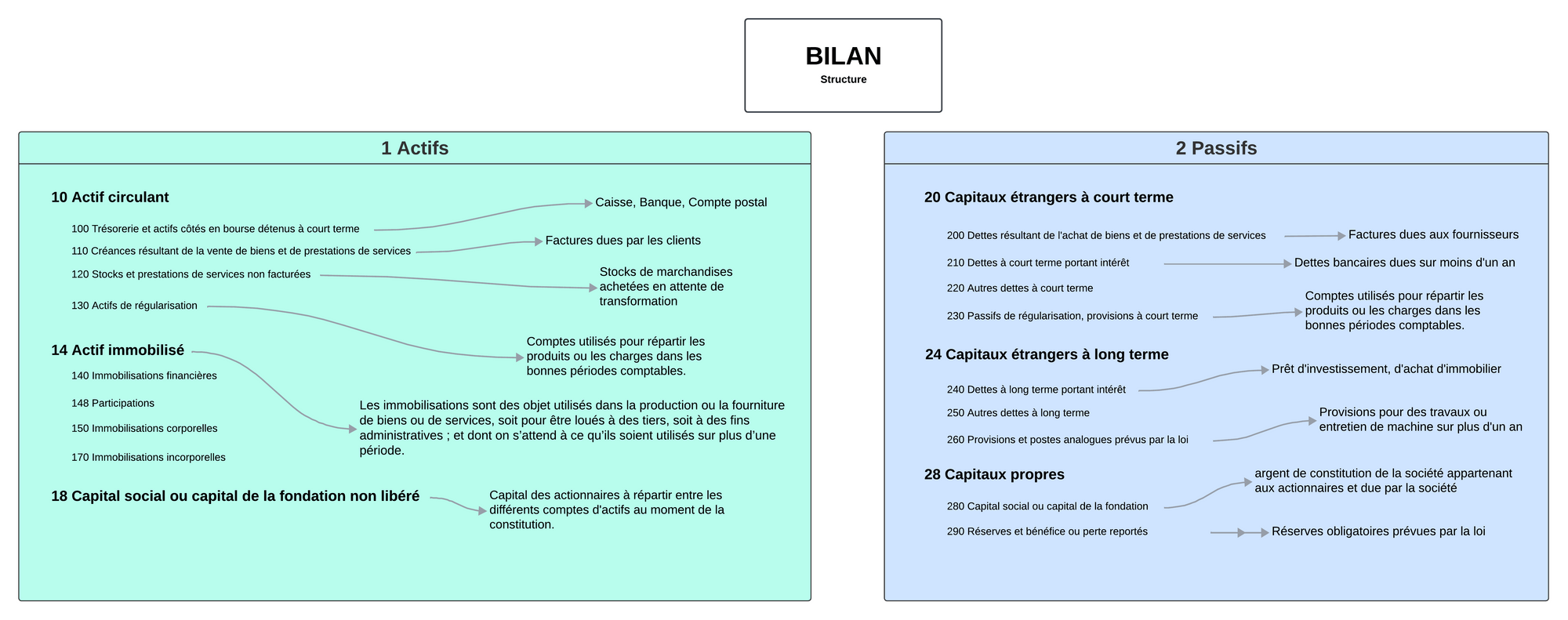The balance sheet is an essential financial document for any company. It provides an overview of the company's financial situation at a given point in time by presenting its assets and liabilities. In this article, we will explore the balance sheet in detail, its components, and their importance.
Definition of the Balance Sheet
The balance sheet is often described as a snapshot of the company's life since its creation. It shows how the company's money is used and must be balanced, meaning that the total value of assets must equal the total value of liabilities. In other words, Assets = Liabilities.
When we talk about the balance sheet, we are referring to what the company owns (assets) and what it owes (liabilities) since its creation.
Class 1: Assets
In a balance sheet, assets represent what the company owns. This can include bank holdings, receivables from third parties, securities, land, property rights, etc. Financial assets are the part of the assets composed of securities that can be sold on a financial market (stocks, bonds, various securities).
At the time of the balance sheet publication, assets represent the company's wealth. Here are some of the key elements of assets:
Cash: These are the funds immediately available to the company, such as cash on hand, in the bank, or in a postal account.
Receivables resulting from deliveries and services to third parties: These are the company's sales that have been invoiced but not yet paid.
Inventory: These are the goods that the company holds waiting to be transformed and sold.
Fixed asset accounts: These are investments whose value decreases from year to year and that increase the company's value. They can include computers, cars, office furniture, or operating licenses and patents purchased during the company's life.
Class 2: Liabilities
According to the definition from the journal Alternatives économiques, in a balance sheet, liabilities represent the origin of what the company owns (assets representing the content and value of the assets in question). Liabilities measure, in fact, all the resources available to an agent (a company). In common language, the term is more synonymous with debt, while liabilities are not limited to these and also incorporate the agent's own resources, which it will not have to repay.
Therefore, at the time of the balance sheet publication, liabilities represent the company's "debts." Here are some of the key elements of liabilities:
20 Short-term debts/capital: These are the amounts that the company must pay within the year.
24 Long-term debts/capital: These are the amounts due in more than one year, such as bank investment loans and mortgages.
260 Legal provisions: These are reserves provided for by law based on the size of the company and, by extension, its economic impact. For example, when economic activity supports more than 1,000 people, the law protects the company with legal reserves.
Equity: This is the capital paid in by shareholders. Although it may seem counterintuitive, it is indeed a debt that the company owes to its shareholders. This money is paid at the time of the company's formation and is owed to the shareholders throughout their participation.
Retained earnings or loss: This is the unused profit calculated through the income statement by the company during the previous year. It is held for a given period pending the decision of its use by the managers.
The image below represents a good overview of the Balance Sheet in its minimal form as required by law.

